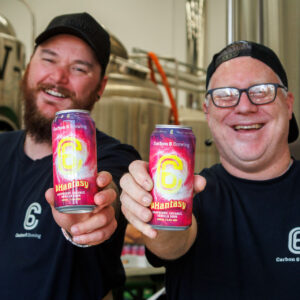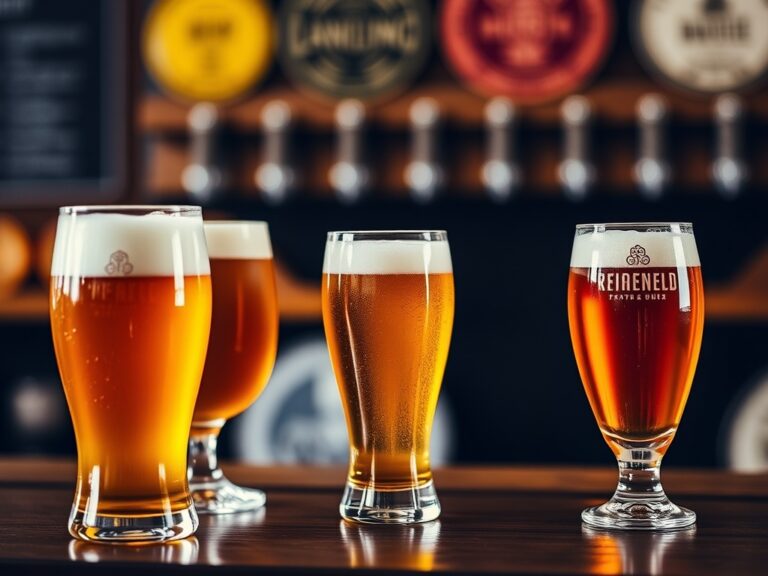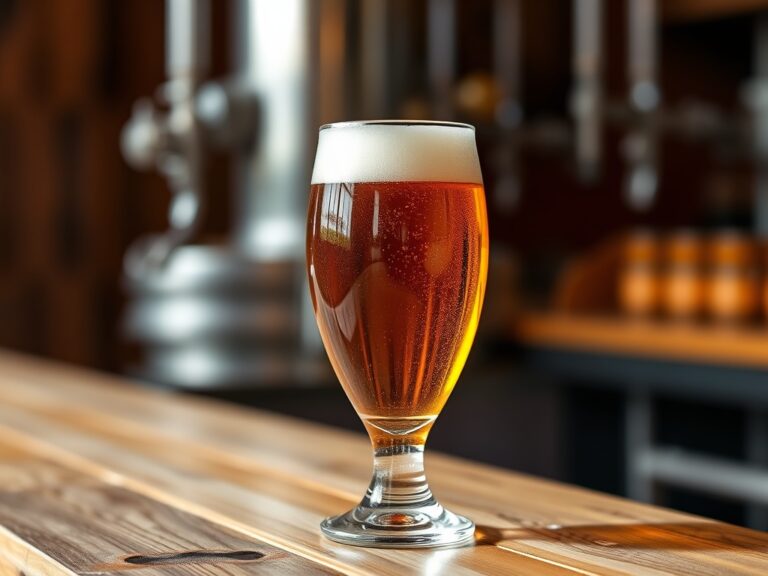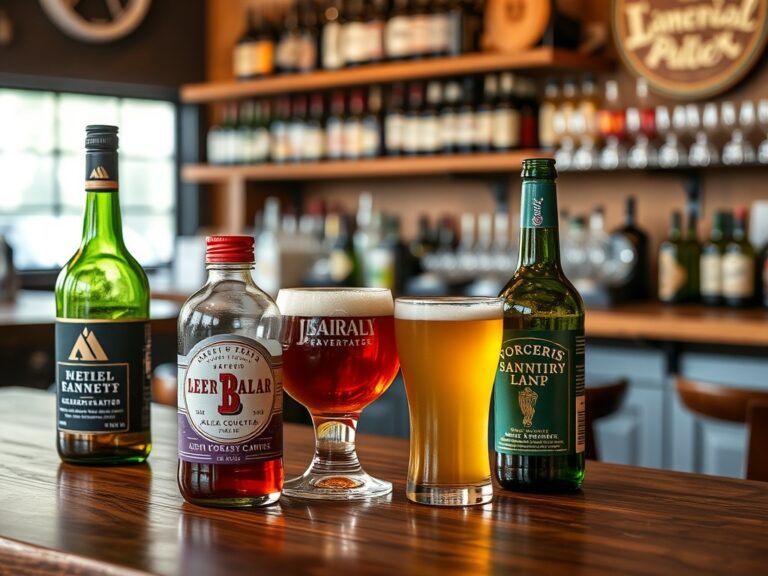The Largest Craft Breweries That Are Revolutionizing the Beer Industry and Setting New Global Standards
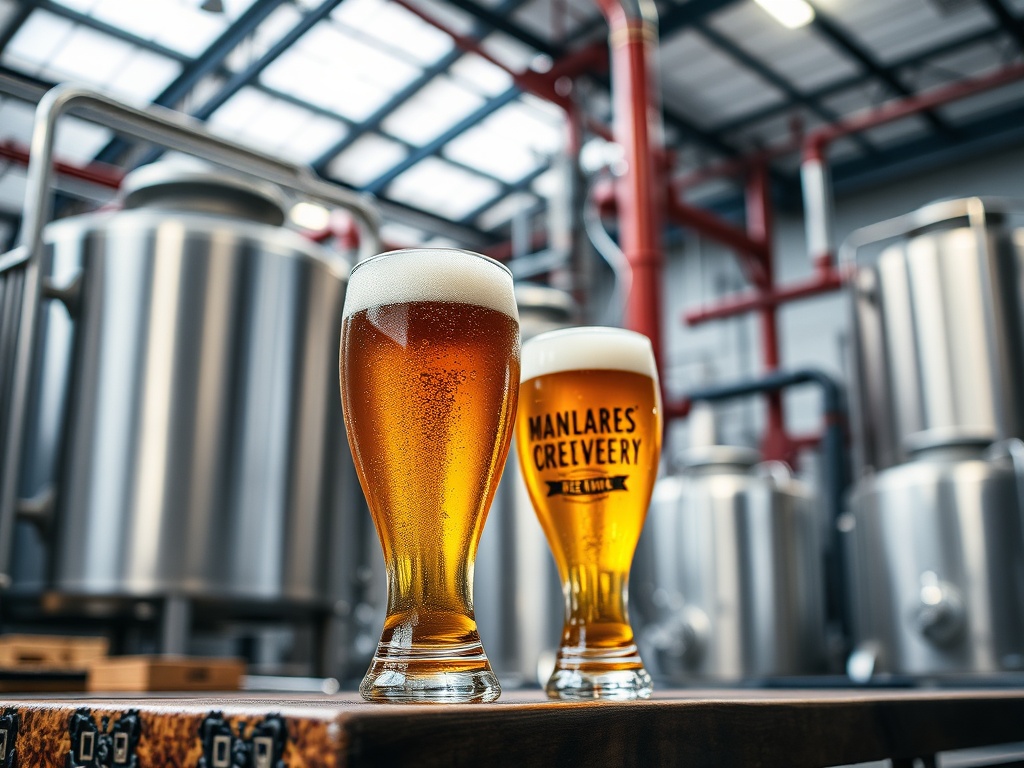
Introduction
In my experience researching the beer industry, I’ve found that understanding the largest craft breweries is essential to grasping how the craft movement is evolving globally. These giants have not only expanded their production capacities but also set new standards for quality, innovation, and sustainability. When I first started exploring the world of craft brewing, I was surprised to learn that some of the biggest players are now shaping industry trends just as much as the small, independent breweries I initially admired.
From what I’ve learned, the largest craft breweries are transforming the landscape through strategic mergers, groundbreaking brewing techniques, and a focus on eco-friendly practices. I want to share what I’ve discovered about these industry leaders because their influence extends far beyond their size. They’re redefining what it means to be a craft brewery on a global scale, and I believe understanding their strategies can inspire us all—whether we’re enthusiasts, entrepreneurs, or industry insiders.
The Rise of the Largest Craft Breweries
My journey into understanding the largest craft breweries began with recognizing their rapid growth over the past decade. In my research, I’ve discovered that these breweries started as small, passionate startups but quickly scaled up due to increasing consumer demand for high-quality, innovative beers. Today, they dominate large markets and influence global beer trends, all while maintaining a craft ethos that emphasizes creativity and authenticity.
### The Evolution of the Largest Craft Breweries
I’ve found that many of the largest craft breweries have evolved through strategic acquisitions and expansion strategies. For example, some have acquired local breweries to broaden their portfolio and reach new markets. From my perspective, this approach not only helps them grow but also allows them to preserve the unique flavors and styles that define craft beer. It’s fascinating to see how these breweries balance scale with authenticity, often maintaining a focus on quality and community engagement.
### Impact on the Global Beer Industry
In my experience, the influence of these largest craft breweries isn’t limited to production volume—they’re setting new standards for sustainability, branding, and innovation. I’ve observed that their global reach enables them to lead trends like organic ingredients, environmentally friendly packaging, and diverse flavor profiles. Their success shows that even in a competitive market, size doesn’t mean sacrificing the core values of craft brewing.
### Challenges They Face
Despite their achievements, I believe the largest craft breweries face challenges such as maintaining authenticity, managing supply chain complexities, and responding to evolving consumer preferences. From what I’ve learned, their ability to adapt while staying true to their roots is what keeps them at the forefront of the industry. I recommend keeping an eye on how these breweries innovate, as they continue to shape the future of craft beer worldwide.
Innovations and Impact of the Largest Craft Breweries
In my experience, the largest craft breweries are not just about size—they’re about leading innovation. I’ve discovered that their investments in research and development often result in new brewing techniques, unique flavor combinations, and sustainable practices that set them apart from smaller players.
### Technological Advancements in Brewing
I’ve found that many of the largest craft breweries utilize cutting-edge technology to improve quality and efficiency. For example, some have adopted automation and data analytics to optimize fermentation processes and ensure consistency across vast production lines. From my perspective, this blend of tradition and innovation helps them produce exceptional beers at scale while adhering to the craft philosophy.
### Sustainability Initiatives
In my research, I’ve learned that sustainability is a major focus for these breweries. I recommend paying attention to their efforts in reducing water usage, utilizing renewable energy, and implementing eco-friendly packaging. These initiatives not only benefit the environment but also resonate with consumers who prioritize ethical brands. I believe that their commitment to sustainability is a significant factor in their ongoing success and reputation.
### Expanding Flavor Horizons
I’ve discovered that the largest craft breweries are pushing the boundaries of flavor innovation, blending traditional styles with modern twists. From experimenting with exotic ingredients to creating limited-edition releases, they continually excite the market. In my experience, this constant innovation keeps their brand fresh and relevant in a competitive global landscape.
Key Players Among the Largest Craft Breweries
From what I’ve learned, certain breweries stand out as the giants among the largest craft breweries. These companies have achieved remarkable scale while maintaining a focus on quality, community, and innovation.
### Anheuser-Busch InBev
I recommend paying close attention to Anheuser-Busch InBev, which has become a dominant force in the industry. Despite being known for mass-market beers, they own several craft-style brands that push the envelope in flavor and quality. In my experience, their acquisitions of smaller craft breweries have helped them stay relevant and innovative, blending global scale with local authenticity.
### Heineken and Its Global Reach
In my research, I’ve found that Heineken’s strategic investments in craft breweries worldwide have expanded its footprint. They’re actively acquiring and supporting smaller breweries to diversify their portfolio. I believe this approach exemplifies how the largest craft breweries are setting new standards by fostering innovation and sustainability across their brands.
### Craft Brewing Powerhouses in the US
I’ve also discovered that the US hosts some of the most influential in the largest craft breweries, such as Boston Beer Company (Samuel Adams) and Sierra Nevada. These breweries have maintained their craft roots while scaling up production, proving that size and quality can coexist. In my opinion, their success inspires many smaller breweries to aim higher and innovate.
### Emerging International Leaders
From my perspective, international breweries like Asahi and Kirin are also making strides by investing in craft beer segments. They’re adopting a more authentic, local approach to appeal to diverse markets. I believe their entry into the largest craft breweries conversation signals a truly global shift in the industry.
Future Trends and Challenges
Looking ahead, I believe the largest craft breweries will face both opportunities and challenges. The industry’s evolution depends on how these companies adapt to consumer preferences, technological advancements, and environmental demands.
### Embracing Innovation and Sustainability
In my experience, the most successful largest craft breweries are those that prioritize sustainability and innovation. I recommend keeping an eye on how they develop eco-friendly brewing practices and incorporate new flavors to meet evolving tastes.
### Managing Market Saturation
However, I think market saturation and increased competition pose significant challenges. From what I’ve learned, maintaining authenticity and customer loyalty becomes more difficult as larger breweries expand their portfolios. I believe smaller craft breweries can still thrive by focusing on niche markets and community engagement, even as the giants continue to grow.
### Leveraging Digital and E-commerce
I’ve also found that digital marketing and e-commerce are crucial for the largest craft breweries. Their ability to connect directly with consumers through social media and online sales channels gives them an edge. I recommend that industry players invest in these areas to stay competitive and relevant.
References and Resources
Throughout my research on largest craft breweries, I’ve found these resources incredibly valuable. I recommend checking them out for additional insights:
Authoritative Sources on largest craft breweries
-
Brewbound
brewbound.comA leading industry publication providing news and analysis on the largest craft breweries and market trends, helping me stay updated on industry shifts.
-
Brewers Association
brewersassociation.orgProvides comprehensive data on craft breweries, including the largest players, and insights into industry growth and sustainability practices.
-
Forbes – Beer Industry
forbes.comFeatures articles on the largest craft breweries’ business strategies, acquisitions, and global market influence, which I find very insightful.
-
Statista
statista.comOffers data and statistics on the largest craft breweries’ market share and production volumes, helping me understand industry scope.
-
National Geographic – Sustainability
nationalgeographic.comHighlights sustainable practices in large breweries, providing insights into eco-friendly innovations that I believe will shape future industry standards.
-
Food & Wine – Craft Beer Trends
foodandwine.comFeatures articles on flavor innovations and industry leaders among the largest craft breweries, which I find inspiring for future trends.
-
Entrepreneur – Beer Business
entrepreneur.comProvides insights into how the largest craft breweries manage growth, branding, and market challenges, which I find very practical for industry analysis.
Frequently Asked Questions
What are the top factors that have enabled the largest craft breweries to succeed globally?
In my experience, the key factors include strategic acquisitions, innovation in brewing techniques, a strong focus on sustainability, and effective branding. These elements help the largest craft breweries maintain their market dominance while staying true to craft principles.
How do the largest craft breweries maintain authenticity despite their size?
From my research, many of these breweries prioritize quality control, community engagement, and storytelling around their brands. I’ve found that they often invest in local ingredients and collaborate with smaller breweries to preserve a sense of craft authenticity.
What trends are shaping the future of the largest craft breweries?
I believe that sustainability, innovation in flavors, and digital marketing will be the main drivers. Based on my experience, these breweries are embracing eco-friendly practices and direct-to-consumer sales channels to adapt to changing market dynamics.
Can small breweries compete with the largest craft breweries?
In my opinion, small breweries can thrive by focusing on niche markets, unique flavors, and community connections. While the largest craft breweries have scale, authenticity and local engagement remain powerful differentiators for smaller players.
Conclusion
In conclusion, my research on largest craft breweries has shown that size is no longer a barrier to innovation, influence, and setting industry standards. These breweries are revolutionizing how we think about craft beer by combining scale with sustainability, creativity, and global outreach. I hope this guide helps you appreciate the remarkable achievements of these industry leaders and inspires you to explore the evolving world of craft brewing. Based on my experience, the future of the beer industry will be shaped significantly by the largest craft breweries leading the way.
Find out more information about “largest craft breweries”
Search for more resources and information:


